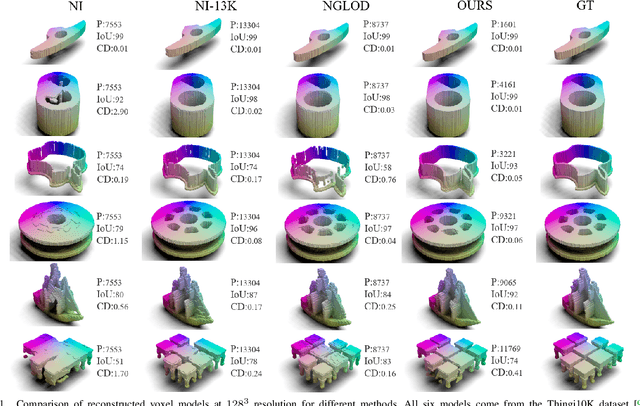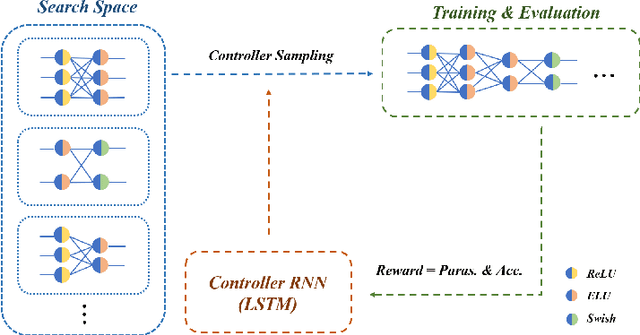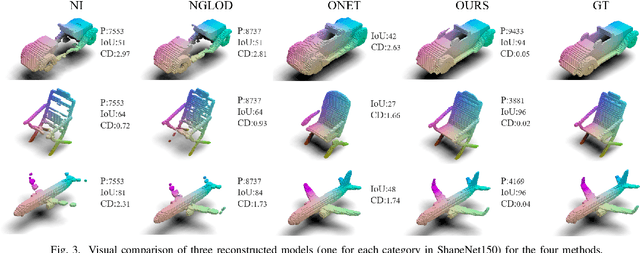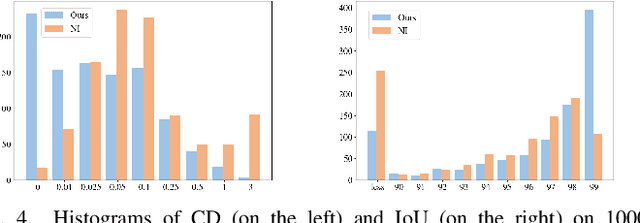Ting Lu
An Efficient End-to-End 3D Model Reconstruction based on Neural Architecture Search
Mar 01, 2022



Abstract:Using neural networks to represent 3D objects has become popular. However, many previous works employ neural networks with fixed architecture and size to represent different 3D objects, which lead to excessive network parameters for simple objects and limited reconstruction accuracy for complex objects. For each 3D model, it is desirable to have an end-to-end neural network with as few parameters as possible to achieve high-fidelity reconstruction. In this paper, we propose an efficient model reconstruction method utilizing neural architecture search (NAS) and binary classification. Taking the number of layers, the number of nodes in each layer, and the activation function of each layer as the search space, a specific network architecture can be obtained based on reinforcement learning technology. Furthermore, to get rid of the traditional surface reconstruction algorithms (e.g., marching cube) used after network inference, we complete the end-to-end network by classifying binary voxels. Compared to other signed distance field (SDF) prediction or binary classification networks, our method achieves significantly higher reconstruction accuracy using fewer network parameters.
Label Confusion Learning to Enhance Text Classification Models
Dec 09, 2020



Abstract:Representing a true label as a one-hot vector is a common practice in training text classification models. However, the one-hot representation may not adequately reflect the relation between the instances and labels, as labels are often not completely independent and instances may relate to multiple labels in practice. The inadequate one-hot representations tend to train the model to be over-confident, which may result in arbitrary prediction and model overfitting, especially for confused datasets (datasets with very similar labels) or noisy datasets (datasets with labeling errors). While training models with label smoothing (LS) can ease this problem in some degree, it still fails to capture the realistic relation among labels. In this paper, we propose a novel Label Confusion Model (LCM) as an enhancement component to current popular text classification models. LCM can learn label confusion to capture semantic overlap among labels by calculating the similarity between instances and labels during training and generate a better label distribution to replace the original one-hot label vector, thus improving the final classification performance. Extensive experiments on five text classification benchmark datasets reveal the effectiveness of LCM for several widely used deep learning classification models. Further experiments also verify that LCM is especially helpful for confused or noisy datasets and superior to the label smoothing method.
 Add to Chrome
Add to Chrome Add to Firefox
Add to Firefox Add to Edge
Add to Edge